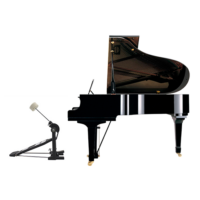An interpretation paradigm is an overarching approach to interpretation that may stem from ethical or aesthetic reasons, such as the belief that music should be performed historically accurately or that it should be played with a particular sonic ideal, or a cultivation of a specific literature, such as a period or a composer. Regardless of the reason, an interpretation paradigm is upheld by selected conventions, concerning aspects such as tempo and dynamics, but also more broadly the expression and character of the music.
An example of an interpretation paradigm is HIP (Historically Informed Performance). HIP is a movement that focuses on recreating the performance practice of tempo, improvisation, and period instruments under which historical works were created. HIP primarily focuses on early music, such as Baroque music, and it is characterized by ethical values to ensure an authentic approach to music. However, HIP is also a cultivation of certain interpretative conventions, which, among other things, canceled the systematic use of vibrato by string players. HIP is, however, not a unified movement; on the contrary, within HIP, there are overarching characteristics such as a desire for groove, tempo changes, sharpened articulation, ornamentation, and improvisation, but within these dominating characteristics of HIP, there are countless variations or dialects.
In stark contrast to HIP is, for example, Werktreue (faithful to the work). Werktreue has long been the dominant approach to interpretation. Werktreue’s ethical focus is on the work itself (as opposed to HIP’s focus on performance), and it is characterized by moderation, respect, and balance. In Werktreue, there is an emphasis on clarifying structure, and it is dominated by homogeneity in timbre (Cook, 2014).
However, there are also interpretive paradigms that focus on individual composers. One of the more distinctive is the interpretation paradigm typically associated with Grieg. It encompasses a particular robustness and swing in the use of tempo and meter. This paradigm likely does not have an ethical reason but possibly a sensual or even caricatured cultural reason. It is simply a result of a development in this repertoire.
Pletnev: Grieg*s Wedding Day at Troldhaugen (2000)
Grieg: Grieg*s Wedding Day at Troldhaugen (1903)
The fact that Baroque music can be performed with very different results by both Werktreue and HIP musicians suggests that the two paradigms do not originate from the music itself but from their ideology. However, when looking at paradigms that are person-oriented, such as Chopin, Brahms, and Grieg, it could be assumed that here, to a greater extent, there are some interpretative characteristics derived from the music itself.
Link to Switching Interpretation Paradigms
